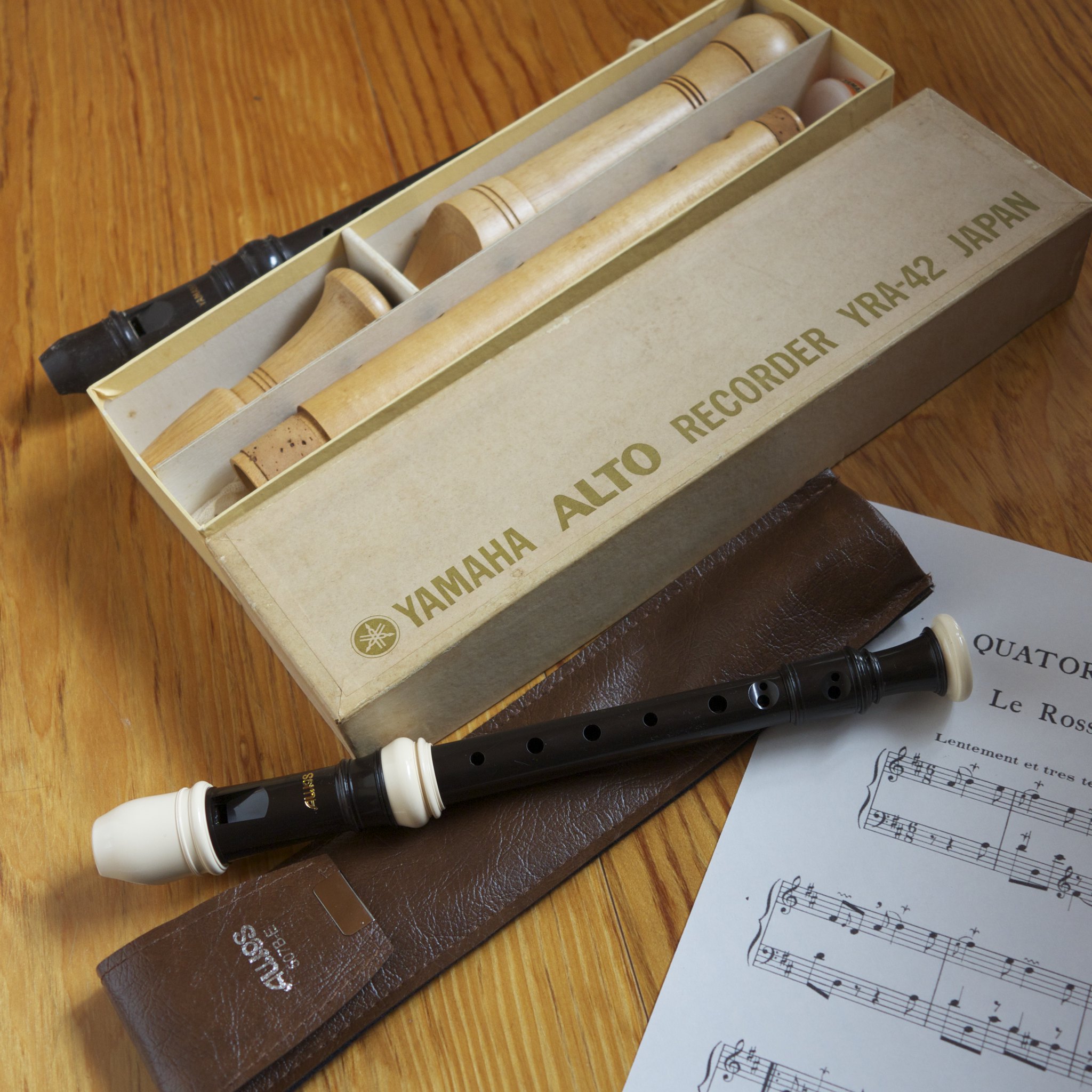Flute vs Recorder. Some see these two instruments as similar, and in many ways they are. Others see these two in stark contrast to one another. Let's take a look at a true comparison of these two instrumental families.
Flutes and Recorders in History
Recorders were very popular instruments in renascence and baroque era music. Monteverdi, Handel, Vivaldi, Telemann, and Bach, among many others, wrote for the instrument. For a period of time in the late 1600s and early 1700s, the term flute douce, or just flute was used to refer to the recorder in England. Even in Italy, flauto referred to the recorder while flauto traverso referred to the transverse flute.
The term "flute" was used to refer to both the traverse instrument and the recorder, and for a time, it mostly referred to the recorder. However, in the 1720s, the traverse flute became the more popular instrument and the recorder began to die off.
The flute as we know it today became the predominant instrument. However, at the turn of the 20th century, performers and scholars became increasingly interested in early music. Studying and performing music from the past with period-accurate instruments became a scholarly pursuit, which lead to somewhat of a revival of the recorder in modern times.
Construction
While the term flute has been used interchangeably, these instruments are very different in construction.
Or have they been...
Recorders, for as long as they have been around, have been made primarily of wood. The upper had would have three fingers holes and a thumbhole, while the lower hand would be responsible for an additional four holes. Larger instruments in the family may have used keys if the holes had to be spaced too far apart.
Flutes, however, are made of metal and are made entirely of keys. But, as discussed in our piece on wooden flutes, this was not always the case.
Around the time of the prominence of recorders, flutes were also made of wood, and had only finger holes. It was not until the 1800s that it started receiving keys and ultimately revolutionized into the modern flute we know today.
How They Are Played
Aside from the obvious orientation of the instrument, there are a lot of similarities in the way the sound is produced, though they are played very differently.
Flute players blow across an open hole on the headjoint of a flute. The angle at which the air hits the blowhole activates the acoustics of the instrument, allowing sound to be produced.
Recorders blow into a mouthpiece that has a window with a sharp edge on it called a labium. Once the airstream hits the labium, it splits in two directions, activating the acoustics of the instrument, allowing sound to be produced.
In both instruments, the pitch is produced by the air impacting at and angle some form of opening, but the way we get there is very different. This has a dramatic effect on the tone of the instrument, allowing the recorder to sound smoother, a bit more pure than the typically brighter sounds of the flute.
Instrument Families
As with many instrument families, the flute and the recorder both have produced various voicings of the instrument to cover a wide range of pitches. Also, both instrument families have found a way to play together.
Historically, recorders were known to be played in consorts, a group of recorders of different ranges. This is music that sounds distinctly medieval or renaissance. In fact, it is the sound of a recorder consort that can often be heard in the background of period movies and video games to represent that era.
In some ways, it seems recorder consorts were a natural part of the instrument's repertoire and its family. Contrast that to the flute, an instrument that has been around for centuries, yet flute choirs are a much more recent development, surfacing in the middle part of the twentieth century.
Modern Perception
In a way, the recorder has reached the height of fame for an instrument. In many places, early music education includes an overview of the recorder. In my elementary school, all fourth graders learned to play it (to varying degrees of success). Among all the wind instruments, it is possible to mass-produce the recorder cheaply, and still retain the concept of the way it is supposed to be played.
In no way do I intend to make it sound like playing a recorder is easy, as it is a difficult instrument to master and make use of the various shades of tone, fingerings, and the many techniques that are unique to the instrument. But, it is an easier wind instrument to play and produce a tone and various pitches from the onset, especially in the beginner construction.
That has lead the instrument to have a sort of household recognition. An instrument that in many ways is still not commonly found in concert halls is perhaps the most widely recognized instrument among non-musicians.
This leads to many not knowing how serious of an instrument the recorder is because of this wide adaptation amongst elementary music education, and the prominence it holds in instrumental music of the past, while the flute is very much a key figure in classical repertoire.
Conclusion
Flutes and Recorders have had a tangled past. The rise of one saw the fall of the other, yet both have a significant place in our instrumental history.
Though the flute is the more common instrument in modern repertoire, I would encourage anyone with a passion for the antique or the unusual to explore some of the medieval and modern repertoire for the recorder to see what is out there.




